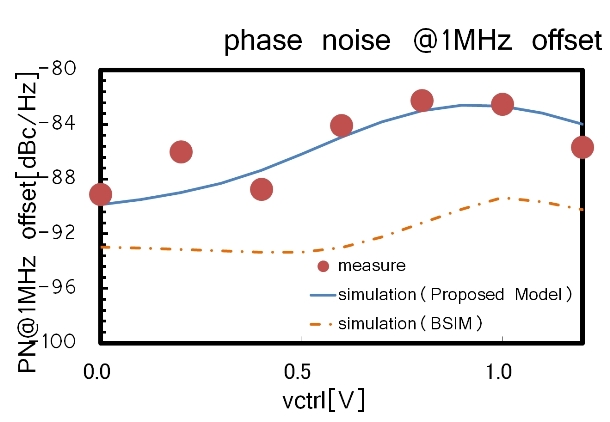Dec 17 2012
Toshiba Corporation today announced the development of a compact MOS-Varactor1 simulation model that delivers high level accuracy from DC to the millimeter wave (60 GHz) region. The new model was developed in cooperation with Professor Nobuyuki Itoh of Okayama Prefectural University.
 Toshiba developed a compact MOS-Varactor model with Okayama Prefectural University, delivering high level accuracy to the millimeter wave region. (Graphic: Business Wire)
Toshiba developed a compact MOS-Varactor model with Okayama Prefectural University, delivering high level accuracy to the millimeter wave region. (Graphic: Business Wire)
The new compact MOS-Varctor model introduces an original algorithm to express scaling effects and can capture the impacts of parasitic effects that dominate in the 60 GHz region. Measurement parameters from 1MHz to 60 GHz for samples with different cell sizes were used for modeling. In general, it is difficult to express MOS-Varactor with a single model, but this newly developed model fully succeeds.
The new model's accurate capture of parasitic effects supports realization of low power consumption in RF-CMOS products, and Toshiba will use it a basic technology for developing such chips, key devices of the company's Analog and Imaging IC Division. Building on the work done so far, Toshiba expects to secure accurate simulation of CMOS millimeter wave circuits in the future.
The new model has been verified with samples with cell lengths ranging from 0.26 um to 2.0 um formed with Toshiba's 65nm RF-CMOS technology. Very good accuracy for all cell sizes was achieved from DC to 67 GHz.
Verification of this model was made on a 60GHz circuit. Phase noise level dependency on the control voltage of the 60 GHz VCO was measured and compared with a circuit simulation, with this model used in the frequency tuning block. Measurement accuracy was found to be 8 dB better than with the conventional model2.
These development results were presented at APMC, the Asia-Pacific Microwave Conference, held in Taiwan from December 4 to 7.
1. MOS (Metal oxide Semiconductor)-Varactor is a planar device, conventionally fabricated in CMOS technology. Generally, it is widely used in the frequency tuning block of the CMOS VCO (Voltage Controlled Oscillator) circuits.
2. BSIM (Berkeley Short-channel IGFET Model) is the conventional model generally utilized in simulating MOS-Varactor. It was developed by the University of California, Berkeley.